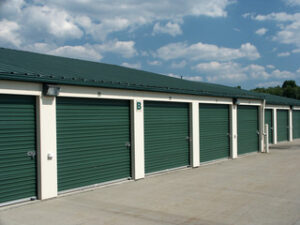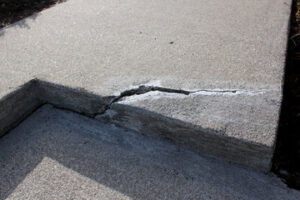If you need extra storage space, a mini-storage unit can help. The key to getting the most out of your storage space is proper packing and organization. It is also a good idea to create a map of your storage area to help you remember where each box is.

A 5’x5’ storage unit is the size of a walk-in closet and can hold a mattress set, small furniture, or a few boxes. Read on Mini Storage Tulsa for more information.
Often, when people need to move or make room for new possessions in their homes, they have no choice but to rent a storage unit. The cost of storage units varies by size and location. Moreover, they can also vary by contract type and storage period. Choosing the right storage facility is critical to ensuring that your belongings are safe and secure. A good place to start is to visit a few different facilities to see what the price ranges are for each unit size.
You can also get a feel for the demand in the local area by visiting storage facilities nearby. This will give you an idea of what types of storage are in high demand and which ones might be oversupplied. You can also learn about the rental fees and hours of operation of the facility, as well as how long the minimum rental period is.
Many homeowners are reluctant to part with personal possessions that have sentimental value, so they turn to storage facilities for help. These facilities can accommodate a variety of items, from small boxes to entire furniture sets. Storage units are typically cheaper than renting a house, and they can be rented for as short a time as a month.
The term “mini storage” refers to a type of storage unit that was popular during the 1960s and 1970s, when the storage industry first began expanding. The term is still in use today, but some people may confuse it with self storage, which refers to traditional storage units that are housed in single-story buildings without a common loading area.
There are a number of factors that determine the cost of a mini storage facility, including the construction costs and labor expenses. The construction cost includes the building itself, as well as site preparation. Labor expenses include clearing the land, removing vegetation, and making drainage arrangements. In addition, there are other costs related to equipment and furnishings. The amount of money that a storage facility owner has to spend on these expenses will affect the overall construction cost.
Security
A robust security system is one of the most important features of a Mini Storage facility. It not only helps prevent theft, but also protects the customers’ belongings. It is possible to install a variety of systems in the facility, including access control and CCTV. These systems can also be monitored remotely. This allows owners to check the status of their storage units and lock them whenever they are away from home. Some systems even allow users to view access logs on their mobile devices to make sure that only authorized people enter the premises.
A well-lit facility is another key component of a safe mini storage building. The lights will deter criminals from entering the premises and will make it easier for customers to move around the facility after dark. In addition, the lighting will help reduce energy costs and improve visibility. In addition to the regular lighting, it is also a good idea to include motion sensors that will turn on when movement is detected.
The right type of fencing is essential to a secure storage building. It should be made of sturdy material that will withstand a lot of pressure, such as concrete or steel. It should be tall enough to prevent intruders from climbing over it. It should also be equipped with gates that will keep out unwanted guests. The gate should be able to be locked from the inside with a key or an access code, so intruders can’t get into the storage area.
In addition to a strong fence, a secure mini storage facility should have security cameras. The cameras will allow owners to keep an eye on their belongings, and they will also serve as a deterrent for thieves. There are many types of security cameras available, from box cameras that look like old VHS camcorders to PTZ cameras that can pan, zoom, and tilt, and even thermal imaging cameras that detect heat changes in total darkness.
When choosing a Mini Storage unit, it is best to choose a facility that has an on-site manager. This will ensure that someone is always available to handle emergencies and watch out for suspicious activity. Some facilities even have managers who live on site, which adds to the overall safety of the facility.
Range of Storage Unit Sizes
As a mini storage facility owner, it’s important to offer a range of storage unit sizes. Different people have different needs, and offering several options will make it easy for customers to find the perfect fit for their belongings. Some people are looking to store seasonal decorations, while others want to store extra furniture and items from a remodel or downsizing.
To determine the size of storage unit you need, start by making an inventory of your belongings. Count the number of boxes you have and identify larger items like furniture or bookshelves. Then, measure each item’s length, width, and height to get an idea of how much space they’ll take up. A visual aid, such as CubeSmart’s Find Your Fit Guide, is a great way to help you make this calculation.
If you have a small amount of things to store, a 5’x5’ storage unit may be sufficient. These units are usually smaller than a closet and can accommodate small items, such as gardening equipment and off-season clothes. You can also use them to store smaller pieces of furniture, such as desks or couches. Many people choose to rent this size of unit as a temporary solution during a home remodel or move.
Medium storage units are 10’x10’, and they can hold the contents of a two-bedroom apartment or small house. They can fit a sofa, dresser, mattress, and a few large boxes. Medium storage units are also popular with students who are moving into a college dorm.
Large storage units are 20’x20’, and they can hold a full-size car or small business inventory. These units are also commonly used as a garage for personal or commercial vehicles. They are the most common type of storage unit and the preferred choice for a family who is storing an RV or boat.
Extra-large storage units are usually 10’x30’ and provide 300 square feet of floor space. These units are ideal for businesses and individuals who need to store inventory or materials long-term. They can even fit a small trailer or boat. While most mini storage facilities feature a standard eight foot ceiling, some might have an overhang of 6”, 10”, or 12”. Overhangs are not only attractive but can be a practical solution for areas that experience rainy weather.








